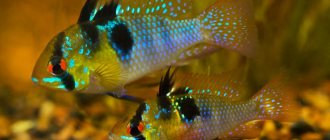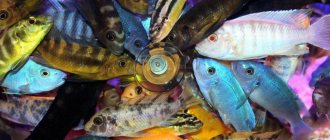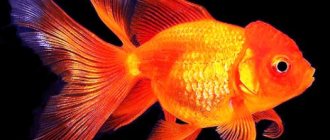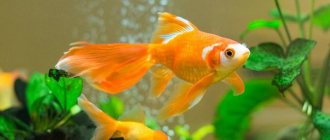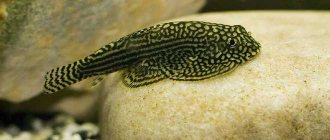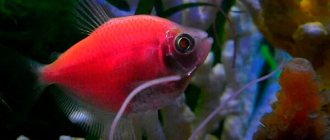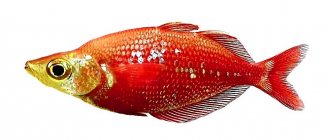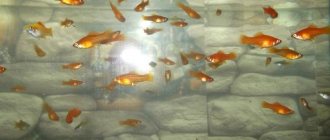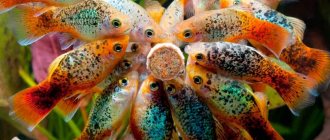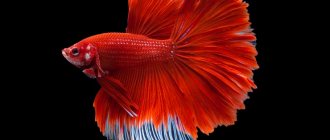5
(12)
Probably every person who is even slightly interested in underwater life on our planet has heard of fish such as piranhas. Documentaries on science channels talk about their creepy nature and taste preferences. Moreover, there are even horror films where these famous fish are the antagonists.
Piranhas are extremely interesting, but not everyone decides to keep them because of their behavior and diet. However, there is a safer and quieter alternative, and it is called “metinnis”.
Habitat in nature
The Latin name Metynnis means plough, and argenteus means covered with silver.
Metynnis silver (lat. Metynnis argenteus) was first described in 1923. It lives in South America, but information about its range varies. The fish is now believed to be endemic to the Tapajos River basin in Brazil.
Since there are many similar species in the genus, it is difficult to say for sure; it is likely that its mention in the area of the Tapajos River is still incorrect, and another species is found there.
Schooling fish, as a rule, live in tributaries densely overgrown with plants, where they feed mainly on plant foods. In nature, they prefer plant foods, but are happy to eat protein if it is available.
What to feed
The Metinnis diet should consist mainly of plant foods: cucumbers, zucchini, peas, lettuce and other greens. Fish will not refuse dry food with spirulina. As additional feeding, the fish are given bloodworms, brine shrimp or coretra. Adult fish should be fed 2 times a day in small portions. Juveniles are fed more often, 3-4 times a day.
Description
Metinnis can grow up to 15-20 cm in length, as males, as a rule, have a small life expectancy in an aquarium of 10 years or more.
Round and laterally compressed, Metynnis argenteus is uniformly silver in coloration, sometimes showing red coloration on the fins and around the throat. The body is completely silver in color, sometimes blue or greenish, depending on the light. There is also a touch of red, especially on the anal fin of males, which is edged in red. In some conditions, fish develop small dark spots on their sides.
Diseases
Metinnis are quite hardy and almost never get sick. To prolong the life of an aquarium inhabitant, it is enough to adhere to the following rules:
- No need to start the aquarium. Fish will feel bad in the vicinity of large accumulations of their own excrement and pieces of plants.
- The composition of the water must be suitable for the species.
- The presence of shelters, the right temperature, space and proper lighting will only be beneficial.
- Peaceful neighbors. Predators cannot be planted, otherwise the Metinnis will simply be eaten.
- It is worth paying attention to the expiration date and condition of the food that the fish eats.
- Diet. Even if a given species is able to feed on protein foods, herbivores must receive plant supplements.
Failure to comply with simple requirements can have a negative impact on the health and immunity of your pet. Decreased immunity will lead to infection by pathogenic bacteria and possibly death.
Even such a strong fish as Silver Metinnis will not always be able to cope with a virus provoked by the inattention or laziness of its owner.
In addition, it is necessary to remember that a preliminary consultation with a specialist will never hurt and will help to avoid many problems when keeping aquarium fish.
Content complexity
The silver dollar is a fairly strong and unpretentious fish. Silver Metinnis is a good choice for those aquarists who want a community aquarium with large fish, because although the fish is peaceful, it is quite large and needs a larger aquarium. It is better that the aquarist already has experience in keeping other fish, since a flock of Metinnis of 4 pieces requires an aquarium of 300 liters or more.
They are quite active, and their behavior in a school is especially interesting, so take as many fish as possible. To keep them you need a spacious aquarium, with soft water, dark soil, and plenty of hiding places.
And do not forget that plants are food for them, which means that only the most unpretentious species will survive in an aquarium with metinnises, and even then it is unlikely. They will maul live plants all day long, to the point that aquarists typically discard live plants in an aquarium containing methinnis and resort to decorating with plastic plants instead.
Reproduction
In good conditions, Metinnis are capable of spawning in a general aquarium, but obtaining juveniles in this case is very doubtful.
For breeding Metinnis vulgaris fish, it is recommended to use a separate spawning aquarium with a volume of 100 liters. The water temperature in it should be 27-30°C, and the hardness should not exceed 4°dH. It is advisable to place living small-leaved plants in the tank that can create dense thickets.
In order to get a good pair of spawners, a group of young fish is purchased in advance, which, as they grow up, will be able to independently form into pairs. Or you can select one female and one male from adult fish ready for spawning, which must be planted and kept separately for a week. All this time, future parents should receive a lot of plant foods.
Fish placed in a spawning tank spawn within 24 hours, after which they should be returned to the aquarium and the maturing eggs should be carefully monitored. The amount of eggs laid ranges from 300 to 1000 eggs. The incubation period is 4 days, about another week or a little less is needed for the larvae to become independent.
The fry are fed with “live dust”, plankton, and Artemia nauplii, and as they grow, they switch to crushed plant food or food specialized for fry.
Metinnises are considered adults after 1 year.
Feeding
It is interesting that, although metinnis is a relative of the piranha, unlike it, it feeds mainly on plant foods. Metynnis argenteus, like all other known metynnis, is primarily herbivorous. His favorite foods include spirulina flakes, lettuce, spinach, cucumbers, and zucchini. They will nibble on sliced cucumber and show considerable interest in peeled peas and carrots, boiled potatoes and small pieces of fresh and canned fruit. If you give them vegetables, be sure to remove any leftovers as they will make the water very cloudy.
Although the silver dollar prefers a plant-based diet, it will also eat protein foods. They especially love bloodworms, coretra, and brine shrimp. They readily and greedily eat artificial food, as well as live and frozen. Their diet must be varied to keep the fish in good condition.
They can be quite timid in a community aquarium, so make sure they eat enough and that other fish don't steal their food.
Breeding
Individuals mature by one year. For spawning, they need to allocate a container with a volume of about 200 liters. It should contain soft (up to 4 dH) and slightly acidic (6.4-7 pH) water. Temperature - under 30 degrees. the likelihood of producing offspring will be higher if the parents are raised independently, in the same aquarium.
Two weeks before the start of spawning, the female and male are seated and begin to be fed more abundantly, with food with plant components. After this, they are transferred to a hatchery with low lighting, which will gradually need to be increased.
During one spawning, the female lays about 2 thousand eggs. They sink to the bottom, where they remain until the fry appear. From this moment on, parents are no longer needed, since they do not care for the offspring. After 3-4 days the larvae appear, and after another week the fry appear. Starter food: zooplankton, Artemia nauplii. You can finely chop the lettuce, but you need to make sure that the young animals can eat it. With a well-chosen diet, young individuals grow completely in six months. In general, life expectancy is 10 years.
Keeping in an aquarium
A large fish that lives in all layers of water and needs open space for swimming. For a flock of 4, you need an aquarium of 300 liters or more. Juveniles can be kept in a smaller volume, but they grow very quickly and outgrow this volume.
Metinnises are unpretentious and well resistant to diseases; they can live in very different conditions. It is important for them that the water is clean, so a powerful external filter and regular water changes are a must.
They also like a moderate current, and this can be created using pressure from the filter. Large individuals can rush around when frightened, and even break the heater, so it is better not to use glass ones.
A very peaceful, gregarious species, M. argenteus can be skittish and timid if left without any shelter. Staying in shallow water, having plenty of room to move around, and having cover they can hide behind if they feel threatened is where they feel best. In addition, they jump well and the aquarium should be covered.
Remember - Metinnis will eat all the plants in your aquarium, so it is better to plant tough species such as Anubias or use plastic plants.
Temperature for keeping: 23-28 °C, pH: 5.5-7.5, 4 - 18 dGH.
Silver Metynnis (Metynnis argenteus) Ahl/Al 1923.
It is generally considered the archetypal Silver Dollar species.
The scientific name translates as: the genus term "Metynnis" means "share - the sharp point of the plow", and the species name "argenteus" means "plated with silver".
Range and Habitat
South America: Probably endemic to the Tapajos River basin, Brazil.
In the wild, silvery Metinnises inhabit the tributaries of the river, densely overgrown with aquatic vegetation.
Description
The silver dollar is an easily recognizable species of tropical fish due to its disc-shaped body, with a shimmering silvery color.
The overall body shape is generally round and tall, with very pronounced lateral compression. The anterior part of the profile of the back and abdomen is not uniformly convex. Like most members of the family (including Piranha!), they have tiny scales with a small mouth and enlarged lips. The caudal fin is slightly receding, the adipose fin is long and low, and in mature males the anal fin has a crescent-shaped anterior portion.
The body color is mainly silver-gray, intensely iridescent. The back is slightly darker, with a greenish-blue tint. The dorsal fin is transparent with a series of small dark spots. Males that are kept in favorable conditions have a reddish edging on the caudal fin and gill cover. A narrow dark vertical stripe runs through each eye. As with most fish, there are color variations.
Size
The maximum standard length is 15 cm, males are slightly smaller.
Behavior and Compatibility
It is best to keep groups of at least five fish. Generally a peaceful fish for the aquarium community and can get along well with other large peaceful species. Much smaller fish may be eaten. Silver Metinnises mainly occupy the middle and upper levels of the aquarium space, so it is a good idea to choose neighbors who occupy the lower level - the bottom of the aquarium - to add contrast. Large, peaceful catfish such as Plecostomus and Doradidae are good choices.
Aquarium
Aquarium size
For a group of adult fish, you will need a container measuring at least 180 cm x 37.5 cm x 37.5 cm - from 250 liters. Length and width are more important than height. Juveniles of this species can be housed in small aquariums.
Content
The difficulty of recreating natural conditions for keeping this species in captivity lies in the fact that they are merciless eaters of aquatic vegetation. Most of the live plants in the aquarium will be a food source for this fish. Stiff-leaved and hardy varieties should be chosen, but these will still need to be replaced regularly. Alternatively, you can use artificial plastic or silk plants.
Silver Metinnis are shy fish, preferring slightly dim lighting and dark gravel substrate. The aquarium should have a lot of open space, and the decor should include shelters, which can be made using submerged driftwood and stones. Creating favorable conditions in the aquarium will stimulate their self-confidence.
Silver dollars are hardy and disease resistant, so they can adapt to a variety of aquarium water conditions. They need clean water, so good filtration and moderate water flow are important. A large external canister filter works best for this purpose. Add a couple of circulators to create proper water movement in the aquarium and maintain high oxygen levels. Glass heaters are not recommended with large/adult Metinnis. These fish are very active and can easily break it. Make sure the aquarium is securely closed as the fish may jump out if startled.
Water parameters:
Temperature: 24 to 28°C pH: 6.0-7.0 Hardness: up to 10°DH
Nutrition
It is necessary to provide a large number of plant components in the diet, including: zucchini, cucumber, peas, fresh herbs and other green vegetables. Commercial foods such as kelp chips, spirulina and vegetable flakes are also recommended. Silver Metinnis will happily accept most aquarium foods and will appreciate treats such as bloodworms, coretras and brine shrimp.
Three to four times, in small portions for young, growing fish. Once or twice is acceptable for larger specimens.
Sexual Dimorphism
The anal fin of the male is more elongated and has a reddish tint.
Breeding
Moderately difficult.
Silver Metinnis spawn in groups, so a large aquarium is required for breeding. For successful spawning, suitable conditions must be created in the spawning area. Water parameters should be in the softer, more acidic end of the species range, and the temperature rises to 28° C. Changing the water to slightly warmer water can stimulate spawning. Males acquire dark coloration when they are ready to breed, especially around the anal, caudal and dorsal fins. The reddish color around the chest area intensifies. The males begin to court the females, chasing them around the entire aquarium, straightening and fluttering their fins and entire body next to them. When the female is ready to reproduce, she begins to lay eggs, which are immediately fertilized by the male.
The eggs fall to the bottom of the aquarium. Silver Metinnis are not as prone to eating their eggs as some other fish, but should still be removed when the spawning is over, this makes it easier to raise the fry. The larvae hatch in about three days. Once the fry have used up their yolk sac reserves, they should first be offered tiny foods such as ciliates. As the fry grow, they can be switched to newly hatched brine shrimp nauplii and powdered feed.
A spawning pair will lay up to 2000 eggs, so high mortality in the litter is likely. It is recommended to cull the least developed, small and deformed fry to ensure that you have a small, controlled brood containing only healthy specimens. The fry grow quickly if they are well fed and after 6-8 months they are already fully formed adult fish. They reach sexual maturity at about 1 year of age.
Silver Metinnis can live in an aquarium for up to 10 years or more.
Notes
Metynnis argenteus is very similar to another member of the genus Metynnis hypsauchen and both fish are sold under the name "Silver Dollar". The latter species is usually called Metinnis Simple or Common to distinguish it from its close relative. They are almost identical in terms of appearance and care/maintenance requirements. The two species can still be distinguished, with M. Hypsauchen having a black spot located just above and behind each eye.
Compatibility
Gets along well with large fish, equal in size or larger. It is better not to keep small fish with a silver dollar, as it can eat it. They look best in a flock of 4 or more individuals. Neighbors for metinnis can be: shark baloo, giant gourami, pouch-branched catfish, platidoras.
Peculiarities
For a couple of fish you need an aquarium of at least 200 liters. When decorating an aquarium, you should give preference to a dark gravel substrate and a dark background to highlight the beautiful silver tints of the fish. Since the main food of the fish is plant food, all living plants will be destroyed. Even hard-leaved and hardy varieties. You can place artificial or silk plants. It is also necessary to create a lot of shelters from driftwood, fragments of pots and piles of stones, since the fish is very timid and timid. But don’t forget about the place for free swimming. The fish leaves behind a lot of waste, so siphoning the soil and changing the water should be done at least once a week in a volume of 30% of the total volume of the aquarium.
Nutrition
An omnivore, it eats almost everything it can find. These include small fish, insects, worms, as well as algae, aquatic plants, fruits and seeds that have fallen into the water. In a home aquarium, you should serve a variety of products combining both live and frozen food (earthworms, shrimp, mussels, etc.) and plant additives (blanched pieces of lettuce, peas, zucchini, fruit, etc.). You can also find specialized commercial feeds on sale that take into account all the dietary needs of such fish.
